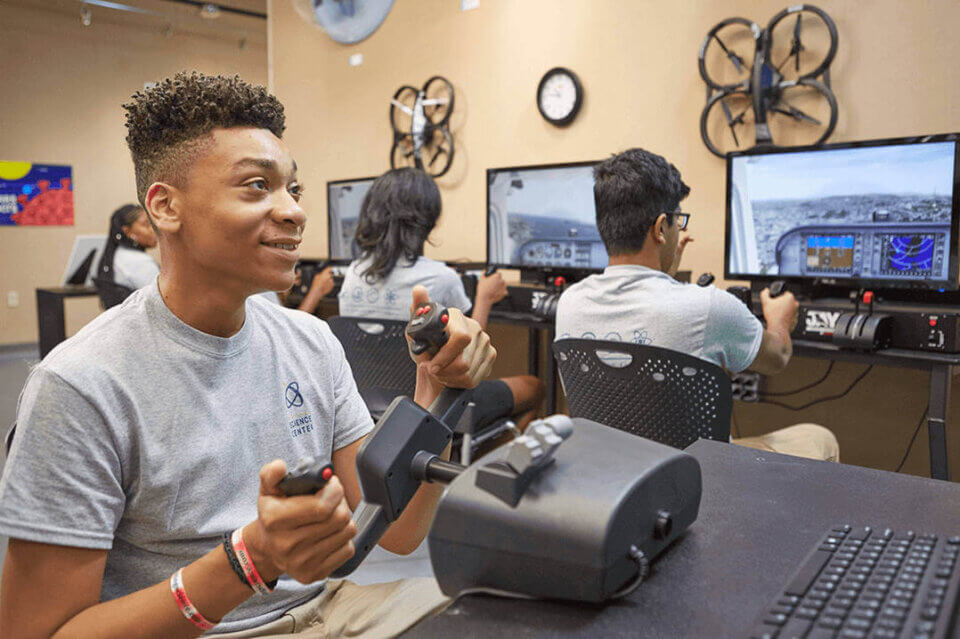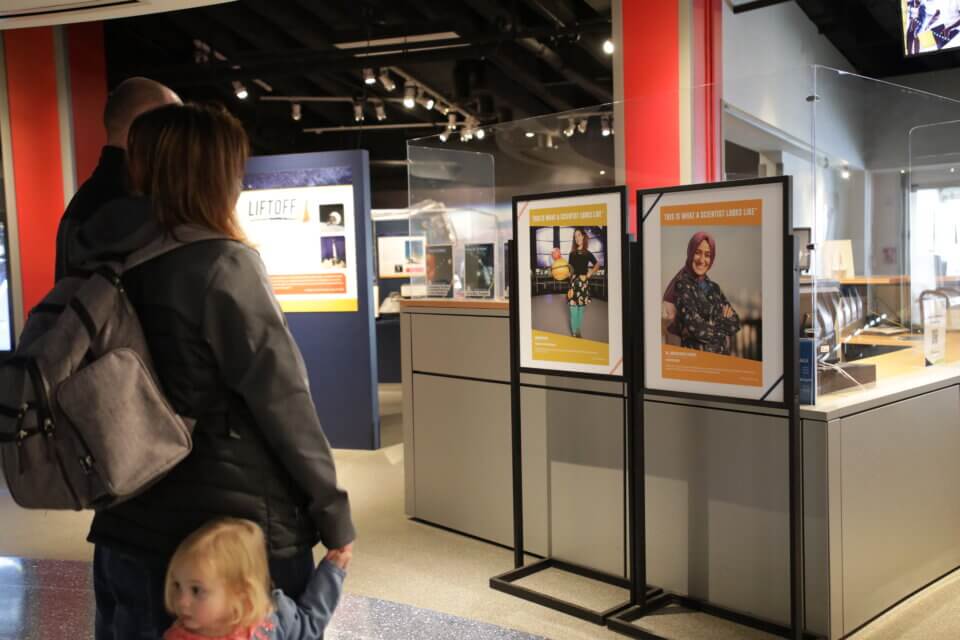This is the Saint Louis Science Center’s NIGHT SKY UPDATE for the week of Friday, March4, 2022. Information updated weekly or as needed. Times given as local St. Louis time which is Central Standard Time (CST). For definitions of terminology used in the night sky update, click the highlighted text. If relying on times posted… Continue reading
Astronomy Fact of the Day: March 5, 2022
March 5, 2022 On this date in 1931, American aviator Geraldyn (Jerrie) Cobb was born. She was one of a group of women aviators who participated in the privately funded FLATS program. These women underwent all the physical and psychological testing required to become astronauts but were never allowed to fly in space. Jerrie often outperformed… Continue reading
Astronomy Fact of the Day: March 4, 2022
March 4, 2022 Eclipses occur when the Sun, Moon, and Earth align. Due to the cycles of alignment, there will always be at least 4 eclipses in a year – two solar and two lunar. However, there can be more than four, with seven being the maximum number of eclipses that can occur in a… Continue reading
Astronomy Fact of the Day: March 3, 2022
March 3, 2022 On this date in 1972, the American probe Pioneer 10 launched using a three-stage version of the Atlas-Centaur which included a TE-M-364-4 solid propellant engine modified from the Surveyor lander. The probe reached a maximum escape velocity of 32,110 miles per hour (51,682 kilometers per hour), which made it the fastest human-made… Continue reading
Saint Louis Science Center Receives Boeing Grant to Support the YES STEMtastic Camp
The Saint Louis Science Center is thrilled to announce a generous $100,000 grant award from The Boeing Company to help fund our nationally recognized Youth Exploring Science (YES) Program and YES’s new STEMtastic Camp program this summer. “We are grateful for the funding from Boeing Global Engagement Grant and the significant support it will provide… Continue reading
Mississippian Head Pot ca. 1300-1500 AD
This distinctive and rare form of pottery is associated with the Late Mississippian Period. While their actual purpose or function is unknown, many believe the facial markings were used to indicate tattooing or piercing unique to an individual. Head pots may have been created as portraits of deceased relatives or representations of an enemy’s severed… Continue reading
Astronomy Fact of the Day: March 2, 2022
March 2, 2022 Jupiter is the largest planet in the solar system. It is approximately 87,000 mi (140,000 km) in diameter, while Earth is only 8,000 miles (12,800 km) across. The giant storm on Jupiter, commonly known as the Great Red Spot, could easily fit the entire Earth inside of it. Over 1,300 Earths could… Continue reading
Astronomy Fact of the Day: March 1, 2022
March 1, 2022 On this date in 1980, the Soviet spacecraft Venera 13 landed on the surface of Venus and transmitted the first color images from the surface of another planet. Additionally, the spacecraft was equipped with a microphone to record atmospheric noises, and the recordings sent back were the first audio recordings from another… Continue reading
What Does A Scientist Look Like?
Support science for our future. Make a gift to the Science Center’s Annual Fund to help support the Science Center’s education programs. What does a scientist look like? Recently, the Saint Louis Science Center has been helping address this question with a series of informational posters on display inside the Science Center. The posters, funded… Continue reading
Astronomy Fact of the Day: February 28, 2022
February 28, 2022 The constellation Triangulum is visible tonight in the southwest at 8:30 pm CST. Although small and not particularly bright, this group of stars has been grouped together by many cultures throughout history. It has been said to represent several different things, including the Nile Delta, the holy trinity, and the island of… Continue reading









